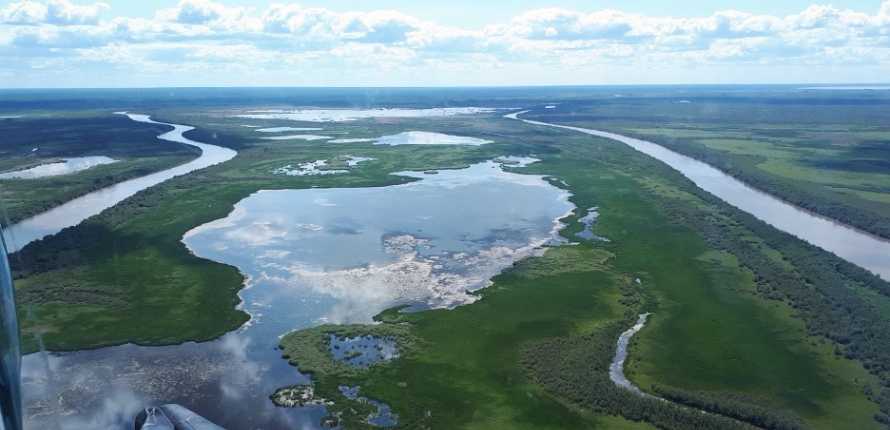We use cookies on this site to enhance your experience.
By selecting “Accept” and continuing to use this website, you consent to the use of cookies.
Search for academic programs, residence, tours and events and more.

Lakes in the Peace-Athabasca Delta (PAD)
Concerns over drying and contamination of lakes in the Peace-Athabasca Delta (PAD), the world's largest freshwater boreal delta, may lead to inclusion of Wood Buffalo National Park (WBNP), which encompasses 80% of the PAD, on UNESCO's List of ‘World Heritage in Danger'. The team’s research conducted in the PAD during 2015-2021 led to the development of a monitoring framework capable of tracking changes in lake water balance, water chemistry, and sediment quality over time and space. The research products directly address long-standing concerns related to declining freshwater availability and potential contaminant deposition from oil sands development in the PAD, aligning with UNESCO’s recommendations and key priorities of the WBNP Action Plan.
Environmental changes associated with multiple potential stressors in the PAD have implications for downstream communities along the Slave River in the NWT. To safeguard the ecological integrity of the PAD and ensure that industries are held accountable, continued monitoring is essential. The PAD lake monitoring framework provides critical knowledge and approaches for evaluating the effectiveness of mitigative actions (plans to install weirs in the delta, allow strategic releases of water from hydropower dams) to maintain positive water balance in the delta’s perched lakes, and detection of contamination caused by pending government approval for release of treated mine wastewater into the Athabasca River.
“A goal of the Wood Buffalo National Park Action Plan includes implementing an integrated PAD Research and Monitoring program … to detect cumulative effects on the PAD and generate information that informs land-use management and regulatory decision making.” -WBNP Action Plan